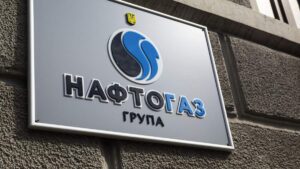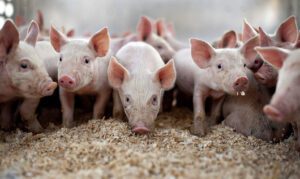
Agricultural holding KSG Agro in January-June 2022 increased its normalized profit by 43% compared to the first half of 2021 – up to $1.21 million from $0.85 million.
According to the holding’s report on the Warsaw Stock Exchange website on Wednesday, its net profit over this period decreased 16 times, to $0.86 million from $13.7 million in the first half of 2021. This change is due to the fact that in the first half of last year, the agricultural group received $12.86 million in profit from the sale of subsidiaries, while in the first half of 2022 it spent $0.35 million on the purchase of assets.
In addition, KSG Agro’s EBITDA decreased in January-June 2022 by 17% to $2.22 million compared to the same period last year, while its revenue decreased by 12% to $6.02 million.
The agricultural holding also reduced gross profit by 17% to $2.05 million, operating profit by 22% to $1.48 million.
According to the report, in the first half of 2022, the group of companies received a net loss of $2.1 million due to the difference in exchange rates, while in January-June 2021 this factor generated $0.49 million in net profit.
KSG Agro emphasizes that under the conditions of the Russian military invasion of Ukraine, the agrarian group has successfully completed the spring sowing campaign, finished harvesting the winter crops and does not expect significant interruptions in the production cycle in the near future.
The report indicates that the total capital of the agricultural producer by June 30, 2022 decreased by 3.8% compared to December 31, 2021, to $22.44 million, while its net debt increased by 14.6%, to $30.89 million Thus, in the first half of the year the ratio of net debt to capital increased by 15.9% – up to 1.38.
The total assets of the agricultural holding for the specified period decreased by 4.1%, to $68.52 million, while long-term debt obligations increased by 10.3%, to $28.43 million, and current liabilities decreased by 21.1%, to $17, 65 million
“The Board of Directors is developing a new development strategy to expand the group’s activities in the EU with the clear goal of having the majority of assets and revenues there over the next 3-5 years. This goal can be achieved through a series of mergers and acquisitions and is financed by a combination of equity and debt funds, including additional issues of shares,” the agricultural holding announced its plans in the report.
At the same time, KSG Agro does not plan to sell its assets in Ukraine. Its development strategy is to expand and invest only in Ukraine to hedge potential risks, as well as mitigate the negative impact on the group’s activities in the current macroeconomic situation in the country.
The number of sows of the agricultural group by June 30, 2022 increased by 9.5% compared to December 31, 2021 – up to 6.09 thousand. At the same time, the total number of animals (pigs and piglets) increased by 30%, up to 52.9 thousand. heads.
In the crop-growing segment, the agricultural holding in January-June of the current year reduced its net profit by 16.4% compared to the same period last year, to $1.22 million, in the livestock segment it increased by 9.2%, to $0.77 million. “other operations” (production of fuel pellets and thermal energy) net profit decreased by 4.7 times, to $0.07 million.
Thus, the total profit of the agricultural group in the operating segment in the first quarter of this year amounted to $2.05 million (-17% compared to the same period last year.
The vertically integrated holding KSG Agro is engaged in pig breeding, as well as the production, storage, processing and sale of grains and oilseeds. Its land bank is about 21 thousand hectares in the Dnepropetrovsk and Kherson regions.
According to the agricultural holding, he is in the top 5 pork producers in Ukraine.
KSG Agro in 2021 increased its net profit by 16 times compared to 2020 – up to $20.27 million, revenue – by 44%, up to $30.75 million, while doubling EBITDA – up to $12.28 million.
The owner and chairman of the board of directors of KSG Agro is Sergey Kasyanov.

In the second quarter of 2022, the net profit of the German automaker Bayerische Motoren Werke AG decreased by 1.7 times to 3.05 billion euros against 4.79 billion euros a year earlier. The company warned about the deterioration of the situation on world markets.
According to a press release, net profit in April-June decreased by 1.7 times and amounted to 3.05 billion euros against 4.79 billion euros in the same period a year earlier.
Earnings before taxes and interest (EBIT) decreased by 31.5% to 3.43 billion euros, compared to 5.01 billion euros.
BMW’s revenue in the last quarter increased by 22% to 34.77 billion euros.
The company’s automotive division in the second quarter reduced EBIT by 1.7 times compared to last year, to 2.46 billion euros. The margin of the indicator at the end of June was 8.5%.
Vehicle deliveries in the second quarter fell 19.8% to 563,190 from 702,440 a year earlier.
The company reaffirmed its guidance for the current year, which calls for an EBIT margin of 7-9% for the automotive division. Meanwhile, BMW cut its 2022 car shipment forecast and now expects the figure to be slightly below last year’s level, while previously forecasting deliveries to be at last year’s level.
Since the beginning of 2022, the capitalization of BMW has fallen by 12.7% and is about 52.5 billion euros.

The profit of state-owned PrivatBank (Kyiv) amounted to UAH 6.3 billion in January-June 2022, which is 44.5% less than in the same period last year (UAH 11.6 billion), the bank’s press service reported on Thursday.
“We ended the first half of the year with a profit, but we are aware that a difficult period lies ahead. Today, it is impossible to foresee all the risks, but PrivatBank entered the war in excellent financial shape and is doing everything to ensure stability under martial law,” the press service quoted first deputy head of the board Anna Samarina.
According to the report, the amount of lost income during the war period is estimated by the bank at more than UAH 5.5 billion.
It is indicated that in the first six months of 2022, the bank formed UAH 6.9 billion in reserves to cover credit risks.
Also among the main expenses of the bank is the transfer of information systems to cloud architecture, despite the fact that the savings in the total budget of expenses amounted to 11%.
According to the press service, since the beginning of the year, the bank’s loan portfolio (excluding loans related to previous owners) has increased by 16%: individuals received UAH 3.5 billion, and legal entities UAH 9.1 billion.
Funds on deposits increased by UAH 61 billion, or 19% since the beginning of the year, while term deposits decreased by 12.6%, and current account balances of customers increased by 34%, or by UAH 73.8 billion.
In addition, in the first half of the year, the bank transferred more than UAH 70 million to charity for targeted assistance to the defenders of Ukraine.

The international vertically integrated pipe and wheel company (TKK) Interpipe received $91.316 million in net profit in 2021, while in 2020 this figure was $195.116 million (a decrease of 53.2%).
According to the company’s annual report, pre-tax profit was $110.907 million compared to $227.405 million in 2020.
At the same time, last year’s revenue increased to $1 billion 132.9 million from $865.131 million.
At the same time, Interpipe increased free cash from $96.631 million to $109.627 million over the year.
In 2020, Interpipe reduced its net profit by 4.2 times compared to 2019 – to $195.116 million from $828.656 million, revenue decreased by 22.9% – to $865.131 million.
Interpipe is a Ukrainian industrial company, a manufacturer of seamless pipes and railway wheels. The company’s products are supplied to more than 80 countries through a network of sales offices located in the key markets of the CIS, the Middle East, North America and Europe.
The structure of the company includes five industrial assets: Interpipe Nizhnedneprovsk Pipe Rolling Plant (NTZ), Interpipe Novomoskovsky Pipe Plant (NMTZ), Interpipe Niko-Tube, Dnipropetrovsk Vtormet, and the Dneprostal electric steel-smelting complex under the Interpipe Steel brand .
The ultimate owner of Interpipe Limited is Ukrainian businessman Viktor Pinchuk and members of his family.

The consolidated net profit of NJSC Naftogaz of Ukraine for 2021 amounted to UAH 12.023 billion against a net loss of UAH 19.002 billion in 2020.
According to the reports published on the website of Naftogaz, its sales revenues last year increased by 36.5% (by UAH 58.15 billion) compared to 2020 – up to UAH 217.384 billion, total revenues – by 13.5% ( by UAH 25.962 billion), up to UAH 218.979 billion.
In terms of segments, revenue from sales in 2021/2020: sales of natural gas (UAH 136.751 billion / UAH 75.821 billion), domestic exploration and production (UAH 90.309 billion / UAH 61.472 billion), Ukrnafta (UAH 36.944 billion / UAH 35.535 billion ), gas transit services (UAH 32.72 billion/UAH 46.724 billion), gas storage (UAH 4.764 billion/UAH 6.046 billion), oil transit services (UAH 3.583 billion/UAH 3.466 billion), domestic oil transportation (UAH 0.411 billion UAH/0.275 billion UAH), other (3.165 billion UAH/2.776 billion UAH), elimination (-91.263 billion UAH/-72.881 billion UAH).
Geographical structure of income from the sale of goods and services in 2021 and 2020: Ukraine (UAH 175.709 billion/UAH 104.266 billion), RF (UAH 36.071 billion/UAH 49.91 billion), Europe (UAH 4.457 billion/UAH 4.837 billion), Asia (UAH 0.802 billion/0), Egypt (UAH 0.342 billion/UAH 0.209 billion), USA (UAH 0.003 billion/UAH 0.012 billion).
The press release of the NAC to the published financial statements notes that the main profit of the company last year was received from mining.
“However, not all segments of activity were profitable and this needs to be corrected. In particular, the activity of importing, trading and supplying gas was unprofitable due to state regulation, primarily the decisions of the NEURC regulator. Gas storage activities were also unprofitable, partly also from – for the decisions of the regulator,” said the head of the NAC Yuriy Vitrenko.
“State-owned companies should be profitable under normal conditions. Given the scale of Naftogaz, such profits are not excessive, taking into account the invested capital and its cost. At the same time, the data indicate that Naftogaz would be profitable in 2021 without gas transit. This important achievement,” he said.
Naftogaz unites the largest oil and gas producing enterprises of the country (100% of Ukrgazvydobuvannya and 50% + 1 share of PJSC Ukrnafta). The Group has a monopoly on the storage of natural gas in underground storage facilities (100% Ukrtransgaz) and the transportation of oil by pipeline across the country (100% Ukrtransnafta), and is actively developing the direction of gas supplies to household consumers.

Agroholding KSG Agro in January-March 2022 increased its net profit by 2.5 times compared to the first quarter of 2021 – up to $1.82 million, EBITDA increased by 10% – up to $1.52 million.
According to the holding’s report on the Warsaw Stock Exchange website on Thursday evening, its revenue for the specified period increased by 1% to $3.54 million.
KSG Agro also increased gross profit by 12% to $1.41 million, operating profit by 10% to $1.12 million.
In addition, in the first quarter of 2022, the group of companies received a net loss of $0.65 million due to the difference in exchange rates, while in January-March 2021 this factor generated $0.4 million of net profit.
KSG Agro emphasizes that in the context of the Russian military invasion of Ukraine, it continues to implement a development strategy focused on growing three winter and two spring crops and pig farming. The products of the agrarian group are basic foodstuffs and are always in demand, while the demand for it is especially high in wartime.
“The group has strengthened the security of the pig farm and temporarily moved its headquarters from Dnipro to Chernivtsi. Since most of the group’s production processes are vertically integrated, it depends only on suppliers of fertilizers, fuel and feed for pigs,” the report says.
According to it, the total capital of the agricultural producer by March 31, 2022 increased by 0.3% compared to December 31, 2021, to $23.42 million, its net debt increased by 5.5%, to $28.45 million. Thus, in the first quarter, the ratio of net debt to equity increased by 4.3% to 1.21.
The total assets of the agricultural holding for the specified period decreased by 3.8% – to $68.73 million, while long-term debt obligations increased by 3.7% – to $26.71 million, and current liabilities decreased by 16.8% – to $18, 59 million
“Since the beginning of the Russian invasion, there has been no hostilities in close proximity to the group’s assets. The group’s pig farm and its crop fields are located in the center of Ukraine, where there has not yet been hostilities. Therefore, as of the date of this report, management does not expect significant interruptions as in the spring sowing campaign, as well as in the subsequent harvesting of winter crops,” explained KSG Agro.
The number of sows of the agricultural group in the first quarter of 2022 increased by 2.2% compared to the first quarter of 2021 – up to 5.68 thousand. At the same time, the total number of animals (pigs and piglets) increased by 11.6% – up to 48.8 thousand heads.
In the crop-growing segment, the agricultural holding increased its net profit by 4.3% over the three months of this year compared to January-March 2021 – up to $0.46 million, in the livestock segment – by 27.9%, up to $0.93 million. other operations” (production of fuel pellets and thermal energy), net profit decreased by 4.3 times – to $0.22 million.
Thus, the total profit of the agricultural group in the operating segment in the first quarter of this year amounted to $1.41 million (+12% compared to the same period last year) and amounted to 77% of all net profit for this period.
For the three months of 2022, the Group of Companies increased pork sales by a third compared to January-March 2021, in dollar terms, sales amounted to $1.36 million.
“The figures above suggest that the group has a clear track record of resilience in challenging environments. From the improvement in macroeconomic performance, we can conclude that other Ukrainian companies exhibit the same character traits. A trait that seems to be in the DNA of the Ukrainian people and serves evidence that victory will ultimately be ours,” the agricultural holding’s report says.
The vertically integrated holding KSG Agro is engaged in pig breeding, as well as the production, storage, processing and sale of grains and oilseeds. Its land bank is about 21 thousand hectares.
According to the agricultural holding itself, it is among the top 5 pork producers in Ukraine.
KSG Agro in 2021 reduced net profit by 16 times compared to 2020, to $20.27 million, revenue by 44%, to $30.75 million, while doubling EBITDA to $12.28 million.
The owner and chairman of the board of directors of KSG Agro is Sergey Kasyanov.